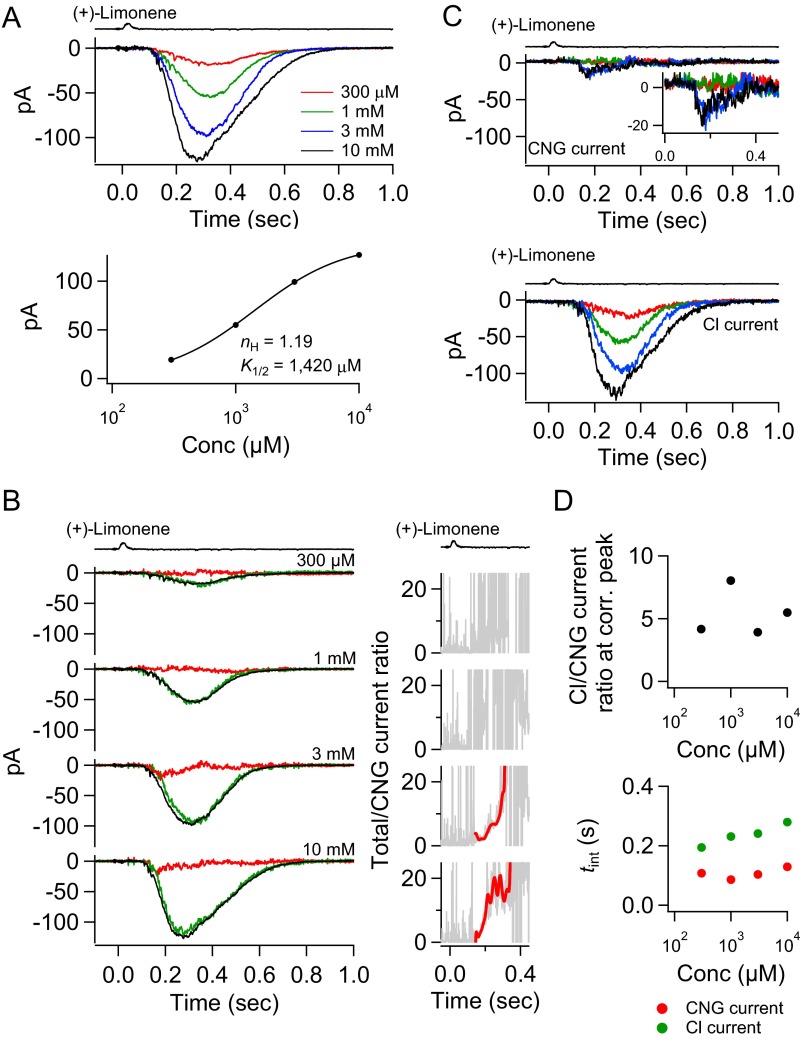Fig. S3.
Similar experiment as in Fig. 6 but on another ORN. (A, Top) Response family of an ORN to a 30-ms pulse of (+)-limonene at 300 µM, 1 mM, 3 mM, and 10 mM, respectively. (Bottom) Semilog plot of stimulus–response relation from response family in Top. Smooth curve is Hill equation, with indicated Hill coefficient (nH) and half-saturating concentration (K1/2) values. (B, Left) Total current (black) from A at different (+)-limonene concentrations together with corresponding CNG (red) and Cl (green) currents. Despite the almost unresolvable CNG current at 300 µM and 1 mM (+)-limonene, a large Cl current, and hence total current, is triggered. (Right) Total/CNG current ratio showing the signal amplification from the Cl current at each odorant strength. See the legend of Fig. S1C for details. Because the CNG current is near 0 for both 300 µM and 1 mM (+)-limonene, the total/CNG current ratio cannot be resolved. (C) Families of CNG and Cl currents from B, plotted as overlaid and expanded to show the progressive change in kinetics. Color-coding matches that in A, Top. Although the tiny CNG current at low odorant strengths precludes detecting the shortening of its time-to-peak with increasing odorant strength (reflecting olfactory adaptation) as observed in the ORN of Fig. 6, the follower Cl current nonetheless shows this behavior (Fig. 6C). (D, Top) Cl/CNG current ratio at their corresponding transient peaks at each concentration of (+)-limonene. (Bottom) Integration time (tint; see text) of CNG and Cl currents at different odorant strengths.

